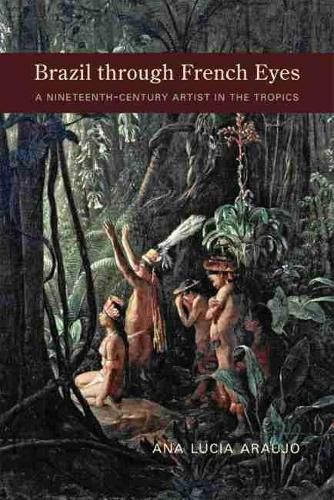Readings Newsletter
Become a Readings Member to make your shopping experience even easier.
Sign in or sign up for free!
You’re not far away from qualifying for FREE standard shipping within Australia
You’ve qualified for FREE standard shipping within Australia
The cart is loading…






In 1858 Francois-Auguste Biard, a well-known sixty-year-old French artist, arrived in Brazil to explore and depict its jungles and the people who lived there. What did he see and how did he see it? In this book historian Ana Lucia Araujo examines Biard’s Brazil with special attention to what she calls his tropical romanticism : a vision of the country with an emphasis on the exotic.
Biard was not only one of the first European artists to encounter and depict native Brazilians, but also one of the first travelers to photograph the rain forest and its inhabitants. His 1862 travelogue Deux annees en Bresil includes 180 woodcuts that reveal Brazil’s reliance on slave labor as well as describe the landscape, flora, and fauna, with lively narratives of his adventures and misadventures in the rain forest. Thoroughly researched, Araujo places Biard’s work in the context of the European travel writing of the time and examines how representations of Brazil through French travelogues contributed and reinforced cultural stereotypes and ideas about race and race relations in Brazil. She further summarizes that similar representations continue and influence perspectives today.
$9.00 standard shipping within Australia
FREE standard shipping within Australia for orders over $100.00
Express & International shipping calculated at checkout
In 1858 Francois-Auguste Biard, a well-known sixty-year-old French artist, arrived in Brazil to explore and depict its jungles and the people who lived there. What did he see and how did he see it? In this book historian Ana Lucia Araujo examines Biard’s Brazil with special attention to what she calls his tropical romanticism : a vision of the country with an emphasis on the exotic.
Biard was not only one of the first European artists to encounter and depict native Brazilians, but also one of the first travelers to photograph the rain forest and its inhabitants. His 1862 travelogue Deux annees en Bresil includes 180 woodcuts that reveal Brazil’s reliance on slave labor as well as describe the landscape, flora, and fauna, with lively narratives of his adventures and misadventures in the rain forest. Thoroughly researched, Araujo places Biard’s work in the context of the European travel writing of the time and examines how representations of Brazil through French travelogues contributed and reinforced cultural stereotypes and ideas about race and race relations in Brazil. She further summarizes that similar representations continue and influence perspectives today.